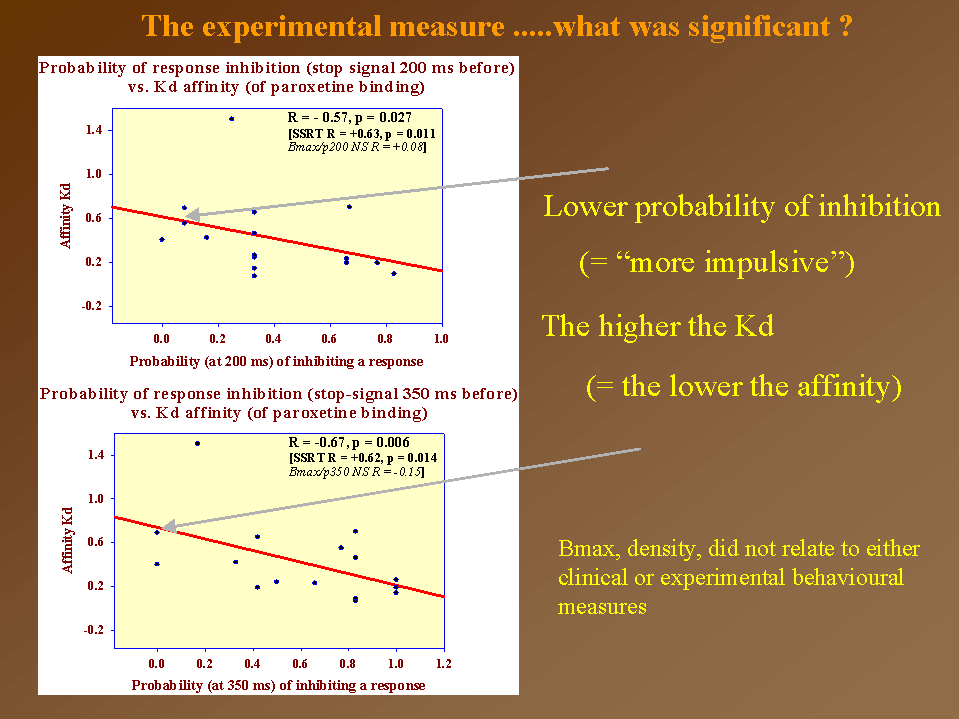|
OADES,
R. D., SLUSAREK, M., VELLING, S., and BONDY, B., Serotonin
platelet-transporter measures in childhood attention-deficit/hyperactivity
disorder (ADHD): clinical versus experimental measures of impulsivity.World
Journal of Biological Psychiatry, 3, 96-100. - - [request
a pdf]
view
prepublication text
In accord with our understanding of journal policy this is an electronic
version of an article published in [see above] and is available online
at informaworldTM
see: http://www.wfsbp.org/fileadmin/pdf/world-journal-public/Vol%203-2.pdf
Introduction:
Impulsivity in terms of aggression, suicide or poor cognitive control
has been associated with low synaptic availability of serotonin (5-HT)
in adults and children.
However characteristics of the 5-HT transporter have not been studied
in children with attention-deficit/hyperactivity disorder (ADHD: combined
type) where "impulsivity" is a core symptom.
(But it may be noted that low measures of HVA/5-HIAA reported for
ADHD children [Oades, 2002] could
reflect increased 5-HT metabolism, the opposite to the widespread
assumption just described.)
Methods:
Here, in 20 children with ADHD, we explored the relationship
of the density (Bmax) and affinity (Kd) of the platelet 5-HT transporter
measured with [3H]paroxetine to both clinical
ratings of impulsivity (Conners' Parent Questionnaire),
and an experimental measure of impulsivity
(the ability to withhold a prepotent response in the "stop-signal"
paradigm: See Slusarek et al. 2001, J.Am.Acad.Child Adolesc.Psychiat.,
40, 355-363).
Results:
1. Decreases of affinity
(increased Kd) correlated with a low probability of response inhibition
(a cognitive measure of "impulsivity" on the stop-signal
task), but not with the clinical ratings of impulsivity
(Fig. 1).
2. However, ratings of distractibility
and impulsivity correlated with the experimental measure of response-inhibition.
3. In contrast, increased transporter
affinity (low Kd) correlated modestly with higher ratings
of aggressive and externalising behaviour (CBCL, Child Behavior
Check List) - see Fig. 2.
4. Bmax was not associated with
any behavioural score (neither symptom ratings nor stop-task measures).
Conclusions:
We conclude that the synaptic availability of 5-HT is under the control
of the 5-HT transporter binding site affinity and that low affinity
may be related to cognitive impulsivity
(distractibility). Increased affinity of the transporter may also
be related to conduct disturbance (and externalising behaviour - i.e.,
aggressive behavioural impulsivity).
Fig. 1 (left)
Fig. 2 (right)

|
|


